Your cart is currently empty!
Tag: Robots

Creating Intelligent Robots: C++ Programming Techniques for Raspberry Pi
In recent years, the field of robotics has seen significant advancements, with intelligent robots becoming more prevalent in various industries. These robots are capable of performing complex tasks autonomously, thanks to advancements in artificial intelligence and machine learning. One popular platform for creating intelligent robots is the Raspberry Pi, a low-cost, credit card-sized computer that can be easily programmed using the C++ language.C++ is a powerful and versatile programming language that is well-suited for developing intelligent robots. It offers a high level of control and efficiency, making it ideal for tasks that require real-time processing and precise control. In this article, we will explore some C++ programming techniques for creating intelligent robots using Raspberry Pi.
One of the key components of creating intelligent robots is implementing algorithms for tasks such as navigation, object detection, and decision-making. C++ provides a wide range of libraries and frameworks that can be used for these purposes. For example, OpenCV is a popular open-source computer vision library that can be used for tasks such as object detection and image processing. By integrating OpenCV into your C++ code, you can create intelligent robots that are capable of recognizing objects and making decisions based on visual inputs.
Another important aspect of creating intelligent robots is interfacing with sensors and actuators. Raspberry Pi supports a variety of sensors and actuators that can be used to gather data from the robot’s environment and control its movements. By writing C++ code to interface with these sensors and actuators, you can create intelligent robots that are capable of interacting with their surroundings in real time.
In addition to algorithms and sensor interfacing, creating intelligent robots also requires a solid understanding of software architecture and design patterns. C++ offers a range of features that can be used to create well-structured and maintainable code. For example, object-oriented programming techniques such as inheritance and polymorphism can be used to create modular and reusable code that is easy to extend and maintain.
Overall, creating intelligent robots using C++ programming techniques on Raspberry Pi can be a rewarding and challenging endeavor. By leveraging the power and versatility of C++, you can create robots that are capable of performing complex tasks autonomously. Whether you are a hobbyist or a professional developer, the possibilities for creating intelligent robots with C++ on Raspberry Pi are endless. So, roll up your sleeves, fire up your Raspberry Pi, and start creating your own intelligent robot today!
#Creating #Intelligent #Robots #Programming #Techniques #Raspberry,practical robotics in c++: build and program real autonomous robots using
raspberry pi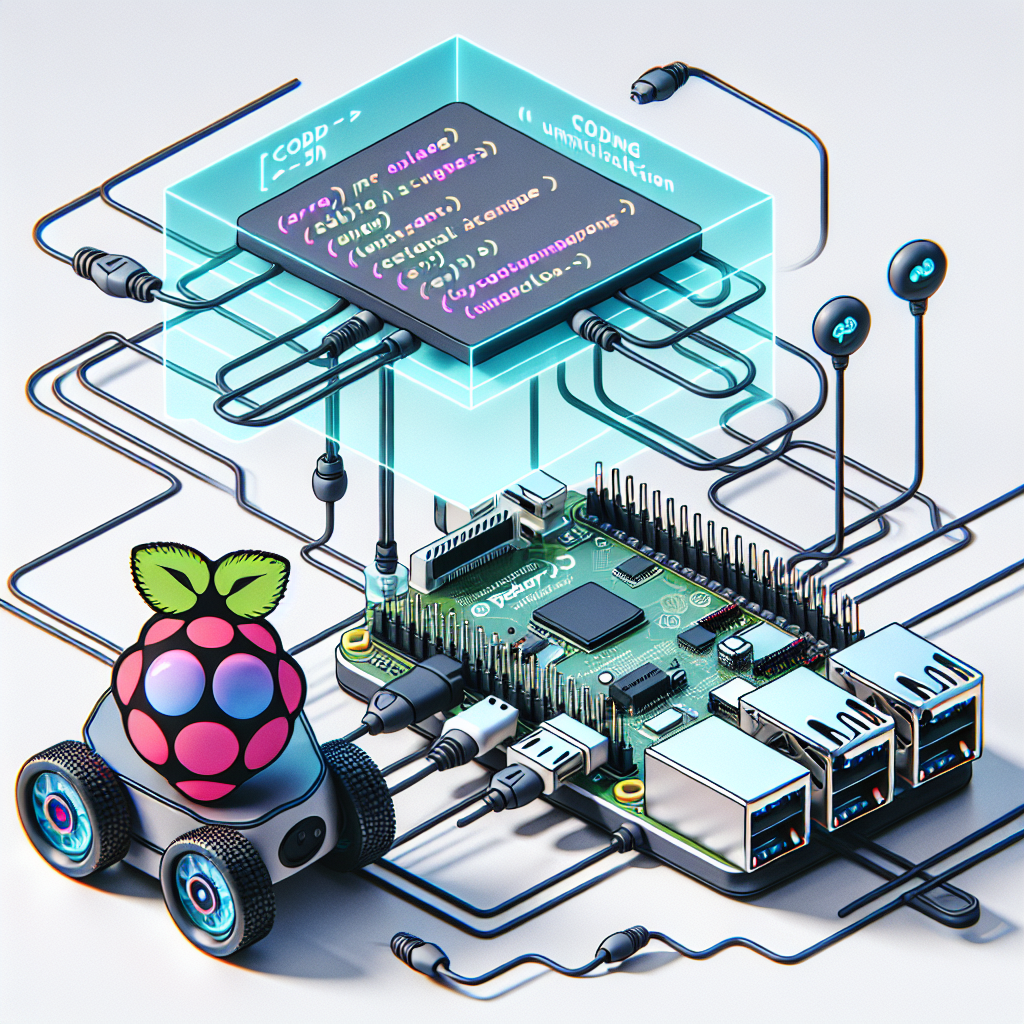
From Code to Control: Building Autonomous Robots with C++ and Raspberry Pi
Autonomous robots have become an increasingly popular topic in the field of robotics, with many hobbyists and professionals alike working to create their own intelligent machines. One of the key components in building these autonomous robots is the programming language used to control them. In the book “From Code to Control: Building Autonomous Robots with C++ and Raspberry Pi,” author Michael Margolis explores the use of C++ and the Raspberry Pi platform to create autonomous robots.C++ is a powerful and versatile programming language that is commonly used in robotics due to its speed and efficiency. By utilizing C++, programmers can create complex algorithms and control systems that are essential for autonomous robots to navigate their environment and make decisions on their own. The Raspberry Pi, on the other hand, is a low-cost, credit card-sized computer that is ideal for controlling robots due to its small size and versatility.
In “From Code to Control,” Margolis provides a step-by-step guide on how to use C++ and the Raspberry Pi to build autonomous robots. The book covers topics such as setting up the Raspberry Pi, programming in C++, using sensors and actuators to interact with the robot’s environment, and implementing algorithms for navigation and decision-making. Margolis also discusses how to integrate machine learning and artificial intelligence techniques into the robot’s control system to create more advanced autonomous behaviors.
One of the key features of the book is its hands-on approach to learning. Margolis provides numerous examples and projects that readers can follow along with to build their own autonomous robots. By working through these projects, readers will gain a better understanding of how C++ and the Raspberry Pi can be used to create intelligent machines that can operate independently in the real world.
Overall, “From Code to Control: Building Autonomous Robots with C++ and Raspberry Pi” is a valuable resource for anyone interested in robotics and autonomous systems. Whether you are a beginner looking to get started in robotics or a seasoned programmer looking to expand your skills, this book provides a comprehensive guide to building autonomous robots using C++ and the Raspberry Pi platform. With its clear explanations, practical examples, and hands-on projects, this book is sure to inspire and educate readers on the exciting world of autonomous robotics.
#Code #Control #Building #Autonomous #Robots #Raspberry,practical robotics in c++: build and program real autonomous robots using
raspberry pi
Unlocking the Potential of Robotics: C++ Programming for Raspberry Pi Robots
Robotics has seen tremendous advancements in recent years, with robots being used in various industries such as healthcare, manufacturing, and agriculture. These robots are equipped with sensors, actuators, and controllers that enable them to perform tasks with precision and efficiency. One of the key components in the development of robotics is programming, which determines the behavior and functionality of the robot.C++ programming is a popular choice for programming robots due to its efficiency, speed, and flexibility. When combined with the Raspberry Pi platform, which is a low-cost, credit card-sized computer, developers have the ability to create sophisticated robots with advanced capabilities.
Raspberry Pi robots can be programmed to perform a wide range of tasks, from simple movements to complex interactions with their environment. With the use of sensors such as cameras, ultrasonic sensors, and gyroscopes, these robots can navigate through obstacles, detect objects, and respond to their surroundings.
Programming C++ for Raspberry Pi robots involves writing code that controls the robot’s movements, processes sensor data, and makes decisions based on the input it receives. This requires a solid understanding of C++ programming concepts such as variables, functions, loops, and conditional statements.
One of the key advantages of using C++ for programming robots is its ability to handle complex computations and algorithms efficiently. This is crucial for robots that need to process large amounts of data in real-time to make decisions quickly and accurately.
Furthermore, C++ allows developers to create modular and reusable code, making it easier to maintain and expand the functionality of the robot as needed. This is important for robotics projects that may evolve over time and require updates or enhancements.
In addition, C++ programming for Raspberry Pi robots can be enhanced with the use of libraries and frameworks specifically designed for robotics development. These tools provide pre-built functions and algorithms that can be easily integrated into the code, saving time and effort in the development process.
Overall, unlocking the potential of robotics with C++ programming for Raspberry Pi robots opens up a world of possibilities for creating intelligent and autonomous machines. With the right skills and tools, developers can build robots that are capable of performing complex tasks with precision and efficiency, revolutionizing industries and improving the quality of life for humans.
#Unlocking #Potential #Robotics #Programming #Raspberry #Robots,practical robotics in c++: build and program real autonomous robots using
raspberry pi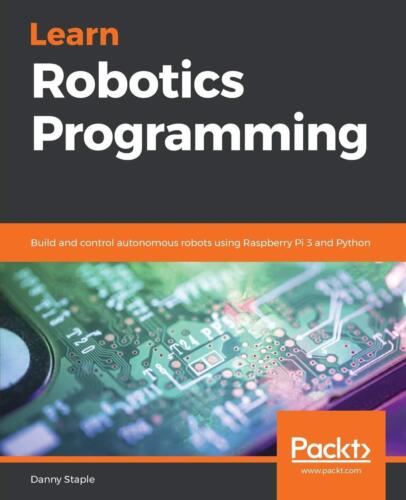
Learn Robotics Programming: Build and control autonomous robots using Raspberry,

Learn Robotics Programming: Build and control autonomous robots using Raspberry,
Price : 36.99
Ends on : N/A
View on eBay
In this post, we will explore the exciting world of robotics programming using the Raspberry Pi platform. Robotics programming involves creating algorithms and code to control autonomous robots, allowing them to perform tasks and navigate their environment without human intervention.With the Raspberry Pi, a popular and affordable single-board computer, you can build and program your own robots from scratch. Whether you are a beginner or an experienced programmer, learning robotics programming can open up a world of possibilities for creating innovative projects and exploring cutting-edge technology.
In this post, we will cover the basics of robotics programming, including how to set up your Raspberry Pi, install the necessary software, and write code to control your robot. We will also explore advanced topics such as computer vision, machine learning, and sensor integration to create more sophisticated and responsive robots.
By the end of this post, you will have the knowledge and skills to build and control autonomous robots using the Raspberry Pi platform. So, if you are interested in exploring the exciting field of robotics programming, stay tuned for our upcoming tutorials and projects!
#Learn #Robotics #Programming #Build #control #autonomous #robots #Raspberry,practical robotics in c++: build and program real autonomous robots using
raspberry pi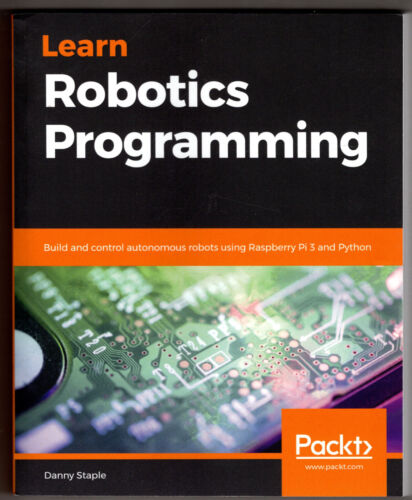
Learn Robotics Programming: Build and control autonomous robots using Raspberry

Learn Robotics Programming: Build and control autonomous robots using Raspberry
Price : 41.50
Ends on : N/A
View on eBay
PiAre you interested in learning how to program and control autonomous robots? Look no further! In this post, we will explore how you can use a Raspberry Pi to build and control your very own robots.
Raspberry Pi is a popular single-board computer that is perfect for robotics projects. With its small size and low cost, it is the ideal platform for building your own autonomous robots. By learning robotics programming with Raspberry Pi, you can take your skills to the next level and create amazing projects that move, sense, and interact with their environment.
To get started, you will need a Raspberry Pi, some basic electronics components, and a willingness to learn. There are many resources available online to help you get started with robotics programming, including tutorials, forums, and project ideas. By following along with these resources and experimenting with your own projects, you can quickly become proficient in programming and controlling autonomous robots.
So why wait? Start your journey into robotics programming today with a Raspberry Pi and unlock the endless possibilities of building and controlling your own autonomous robots. Happy coding!
#Learn #Robotics #Programming #Build #control #autonomous #robots #Raspberry,practical robotics in c++: build and program real autonomous robots using
raspberry pi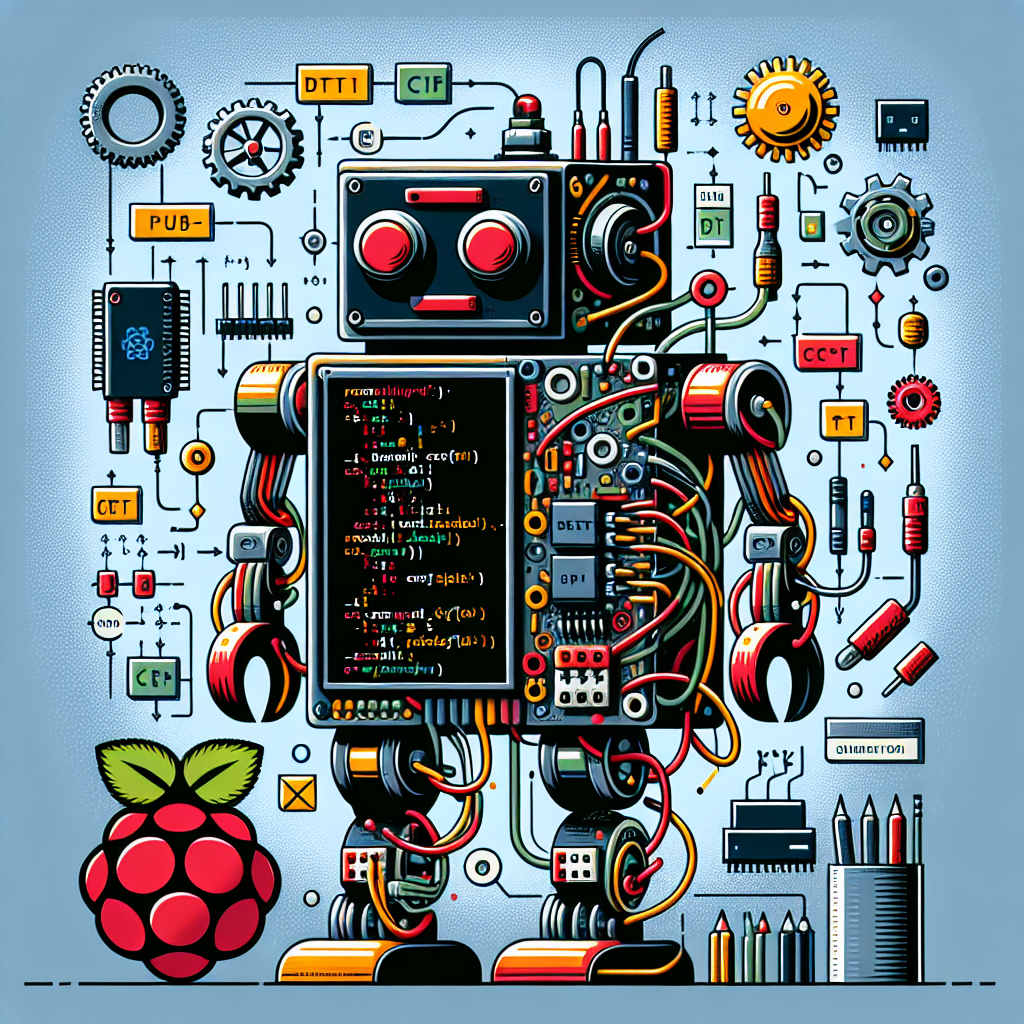
Step-by-Step: Programming Real Robots with C++ and Raspberry Pi
Programming real robots is an exciting and rewarding endeavor that can open up a world of possibilities for creators and enthusiasts alike. With the rise of accessible technology like the Raspberry Pi and the power of programming languages like C++, it has never been easier to bring your robotic creations to life.In this step-by-step guide, we will walk you through the process of programming real robots using C++ and a Raspberry Pi. Whether you are a beginner or an experienced programmer, this guide will provide you with the knowledge and tools you need to start building and programming your own robots.
Step 1: Setting up your Raspberry Pi
The first step in programming real robots with C++ and a Raspberry Pi is setting up your Raspberry Pi. If you do not already have a Raspberry Pi, you can purchase one online or at your local electronics store. Once you have your Raspberry Pi, you will need to install an operating system like Raspbian and set up your development environment.
Step 2: Installing the necessary software
Next, you will need to install the necessary software for programming real robots with C++ on your Raspberry Pi. This includes a C++ compiler like g++, as well as any libraries or frameworks you may need for your specific project. You can install these tools using the package manager on your Raspberry Pi.
Step 3: Writing your C++ code
With your Raspberry Pi set up and the necessary software installed, you can now start writing your C++ code for your robot. This code will control the behavior of your robot, including its movements, sensors, and interactions with its environment. You can use libraries like ROS (Robot Operating System) to simplify the process of programming your robot.
Step 4: Testing and debugging your code
Once you have written your C++ code, it is important to test and debug it to ensure that it works correctly. You can do this by running your code on your Raspberry Pi and observing the behavior of your robot. If you encounter any errors or unexpected behavior, you can use debugging tools like gdb to identify and fix the issues in your code.
Step 5: Deploying your code to your robot
Finally, once you have tested and debugged your C++ code, you can deploy it to your real robot. This will allow you to see your robot in action and interact with it using the code you have written. You can use tools like SSH or FTP to transfer your code to your robot and run it remotely.
In conclusion, programming real robots with C++ and a Raspberry Pi is a fun and rewarding experience that can help you bring your robotic creations to life. By following the steps outlined in this guide, you can start building and programming your own robots with confidence. So, what are you waiting for? Start programming your real robots today!
#StepbyStep #Programming #Real #Robots #Raspberry,practical robotics in c++: build and program real autonomous robots using
raspberry pi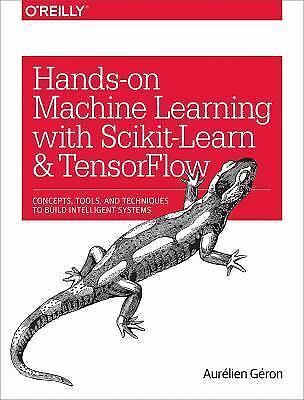
Learn Robotics Programming: Build and control AI-enabled autonomous robots using

Learn Robotics Programming: Build and control AI-enabled autonomous robots using
Price : 31.96
Ends on : N/A
View on eBay
Python and ROSAre you interested in learning robotics programming and building autonomous robots that can think for themselves? Look no further, as we have the perfect course for you!
In this comprehensive course, you will learn how to program robots using Python, a versatile and easy-to-learn programming language. You will also learn how to use Robot Operating System (ROS), a popular framework for building robot applications.
By the end of this course, you will be able to build and control AI-enabled autonomous robots that can navigate their environment, avoid obstacles, and perform various tasks. You will also learn how to integrate sensors and actuators to make your robots more intelligent and responsive.
So, if you’re ready to take your robotics programming skills to the next level, enroll in our course today and start building your own autonomous robots!
#Learn #Robotics #Programming #Build #control #AIenabled #autonomous #robots,practical robotics in c++: build and program real autonomous robots using
raspberry pi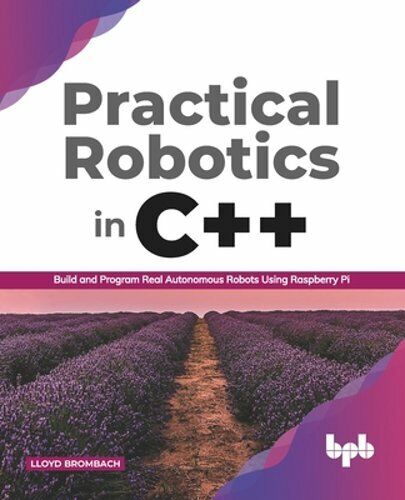
Practical Robotics in C++:: Build and Program Real Autonomous Robots Using: New

Practical Robotics in C++:: Build and Program Real Autonomous Robots Using: New
Price : 36.86
Ends on : N/A
View on eBay
Practical Robotics in C++: Build and Program Real Autonomous Robots Using New TechniquesAre you interested in diving into the world of robotics and autonomous systems? Look no further than Practical Robotics in C++, a comprehensive guide that will teach you how to build and program real autonomous robots using cutting-edge techniques.
In this post, we will explore the key features of this book and how it can help you take your robotics skills to the next level. From understanding the basics of C++ programming to implementing advanced algorithms for robot navigation, this book covers everything you need to know to create your own autonomous robots.
With step-by-step instructions, detailed explanations, and hands-on projects, Practical Robotics in C++ will guide you through the process of building and programming robots that can navigate their environment, avoid obstacles, and perform complex tasks autonomously.
Whether you are a beginner looking to learn the basics of robotics or an experienced programmer wanting to take on new challenges, this book has something for everyone. So why wait? Start your journey into the exciting world of robotics today with Practical Robotics in C++!
#Practical #Robotics #Build #Program #Real #Autonomous #Robots,practical robotics in c++: build and program real autonomous robots using
raspberry pi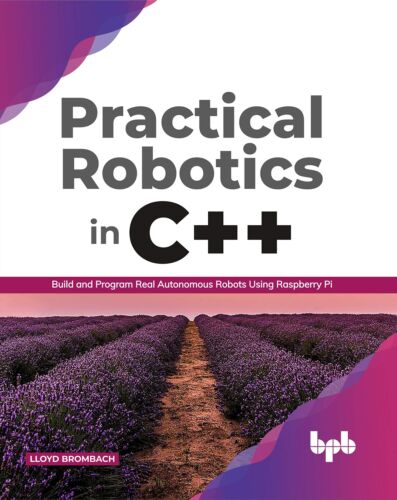
Practical Robotics in C++: Build and Program Real Autonomous Robots Using Raspb,

Practical Robotics in C++: Build and Program Real Autonomous Robots Using Raspb,
Price : 57.99
Ends on : N/A
View on eBay
In this post, we will explore the world of practical robotics using C++ programming language and Raspberry Pi. We will learn how to build and program real autonomous robots that can perform various tasks on their own.Raspberry Pi is a popular single-board computer that is widely used in robotics projects due to its affordability, versatility, and ease of use. By combining Raspberry Pi with C++ programming language, we can create powerful and efficient robot systems that can navigate, interact with their surroundings, and complete complex tasks.
We will cover topics such as setting up your Raspberry Pi for robotics projects, understanding the basics of C++ programming, integrating sensors and actuators with your robot, and implementing algorithms for autonomous navigation and decision-making.
By the end of this post, you will have the knowledge and skills to build and program your own autonomous robots using C++ and Raspberry Pi. So, let’s dive into the exciting world of practical robotics and start building some amazing robots!
#Practical #Robotics #Build #Program #Real #Autonomous #Robots #Raspb,practical robotics in c++: build and program real autonomous robots using
raspberry pi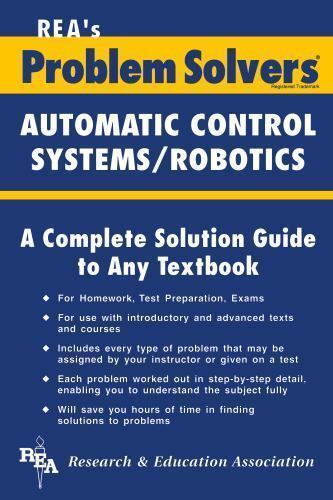
Practical Robotics In C++: Build And Program Real Autonomous Robots Using R…

Practical Robotics In C++: Build And Program Real Autonomous Robots Using R…
Price : 34.57
Ends on : N/A
View on eBay
Practical Robotics In C++: Build And Program Real Autonomous Robots Using ROSAre you interested in learning how to build and program real autonomous robots using C++ and the Robot Operating System (ROS)? Look no further! In this post, we will explore the world of practical robotics and show you how to create your own autonomous robots using the power of C++ and ROS.
First, let’s talk about why C++ is a great choice for robotics programming. C++ is a powerful and versatile programming language that is widely used in the robotics industry. It offers a high level of control over hardware and low-level programming, making it ideal for building complex robotic systems. Additionally, C++ is highly efficient and can handle the computational demands of real-time robotics applications.
Now, let’s discuss ROS – the Robot Operating System. ROS is an open-source framework for building robotic systems. It provides a set of tools, libraries, and conventions that simplify the development of complex robot applications. ROS is designed to be modular and scalable, allowing you to easily integrate different sensors, actuators, and algorithms into your robotics projects.
To get started with practical robotics in C++, you will need a basic understanding of C++ programming and some experience with ROS. If you are new to C++ or ROS, there are plenty of online resources and tutorials available to help you get up to speed.
Once you are comfortable with C++ and ROS, you can start building your own autonomous robots. You can create a simple mobile robot that can navigate through a room, avoid obstacles, and follow predefined paths. Or, you can build a more complex robot that can perform tasks like object detection, manipulation, and autonomous navigation.
Overall, practical robotics in C++ is a rewarding and challenging field that offers endless possibilities for innovation and creativity. Whether you are a beginner or an experienced roboticist, learning how to build and program real autonomous robots using C++ and ROS is a valuable skill that can open up new opportunities in the world of robotics. So, what are you waiting for? Start building your own autonomous robots today!
#Practical #Robotics #Build #Program #Real #Autonomous #Robots #R..,practical robotics in c++: build and program real autonomous robots using
raspberry pi
